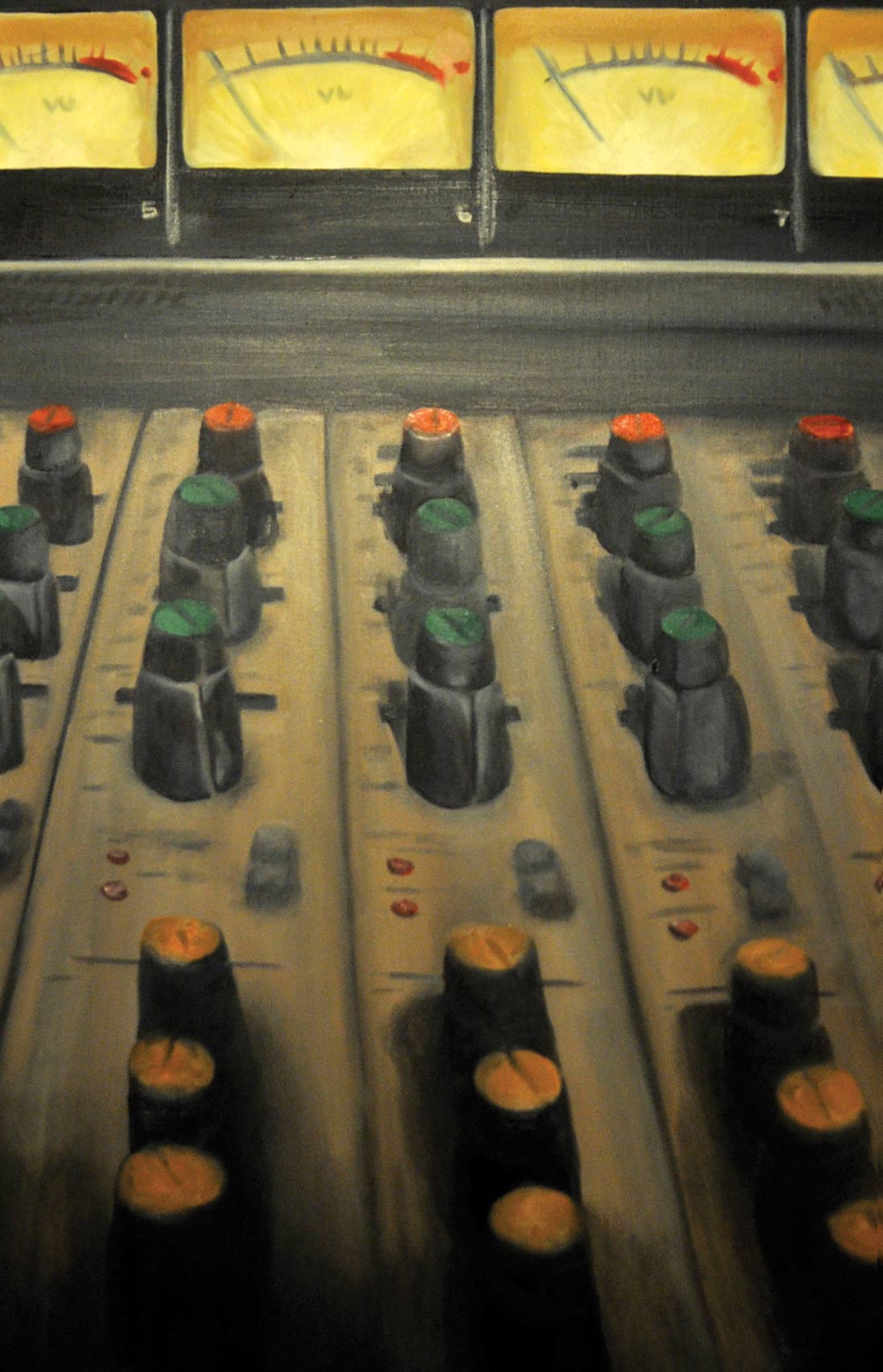Over the past few years, Slate Digital plug-ins have become de rigueur tools for music production and mixing in the digital environment. Steven Slate also produces a couple pieces of all- analog hardware, under the Slate Pro Audio moniker, that in my opinion, have not received the attention they deserve.
Recently, I put the Fox QuadTone mic preamp through its paces at my studio. Housed in a 1RU-height chassis with a unique black-on-black tatoo'ed finish, the Fox's functionality as a preamp is also unique. I get the sense that Steven, like many of us, thought to himself, "I would love a preamp where I can select between my favorite vintage tone and my favorite super- clean tone in one unit." With that thought, he designed the two-channel Fox with two separate preamp circuits per channel - Vintage and Modern - with the ability to not only switch between the two circuits, but also combine the input stage of one circuit and the output stage of the other.
Each channel of the Fox sports gain and trim knobs, along with switches for phantom power, polarity, -10 dB pad, Vintage/Modern circuit selection, and Normal/Combo mode selection. Another switch selects the input - either the front- panel 1/4'' instrument or the rear XLR mic, and a green LED indicates signal level by varying its intensity. I like the feel of the knurled metal knobs for stepped gain and continuously- variable, passive output attenuation. Riding the output level during a vocal take feels very smooth and controlled. Activating many of the front-panel switches thoughtfully mutes the output for a few seconds to avoid any pops. The Fox's specs are very good, with very low noise measurements and a wide frequency response. The internal power supply is shielded from each of the channel's circuits, and the build quality, componentry, and internal wiring all appear to be first class.
The Fox's Vintage circuit is a faithful reproduction of the vintage Neve 1073 preamp with Slate's custom versions of the original St. Ives transformers. The Modern is a high-resolution transformerless design utilizing Burr-Brown op-amps, comparable sonically to GML. Both circuits provide about 60 dB of gain in 5 dB steps, with a passive output attenuator. The magic of the Fox lies in the Normal/Combo mode switch, which gives you the ability to mix-and-match the input and output sections of each circuit type. That is, you can create a hybrid combo of a Vintage input with a Modern output, or a Modern input with a Vintage output. To put it more simply, the Fox gives you two preamp channels, each capable of four distinct voicings.
In the studio, I found the Fox to sound fantastic in all of its modes, with noticeable variations in tone and response from each circuit combination. The Vintage circuit, paired with an LA-2A and a large-diaphragm tube mic gave me a classic Al Green kind of feel on a male R&B singer, while on loud rock vocals, the Vintage circuit compressed and saturated possibly a hair more than a Neve preamp, allowing for a wide range of useable tones. The Modern channel sounds fast and open, but it still maintains the size, punch, and presence of drums and vocals. Modern/Combo turned out to be my favorite starting point, giving me the speed and accuracy I like with a bit of the harmonic push and high-frequency damping of the Vintage output transformer. Something about the 1073 circuit gives instruments and vocals a unique kind of space and presence, and the Fox's Vintage circuit provides this sound as well.
Having the variety of preamp color options lends your existing mic collection a whole new palette of sounds, too. Some sources love the transformerless path, while others benefit from the transformer circuit, and those in-between can benefit from one of the combo modes.
I am a fan of inserting transformer-based gear on individual inserts of my in-the-box mixes, and for this purpose, the Fox provides two channels with a wide range of tone and color. Unfortunately, the Fox doesn't have line inputs, but that didn't keep me from using the unit to process various mix buses and individual instruments during a mix. Using the mic inputs worked after I trimmed down my insert send level by 20 dB so I didn't overload the Fox. The Fox then allowed me to dial in various amounts of harmonic color that sounded particularly nice on snare drums, basses, and vocals, and also made full mixes sound wider by adding some midrange energy to the drums and guitars. In a few instances, the Fox reminded me of using a great compressor, like a Fairchild, where the processor affects the inner harmonics of the mix, like the tone of the snare and vocals and top of the bass, but seems to leave the rest of the mix alone. The Fox is certainly well suited to use as the line amplifier after a passive summing amp, and I hope future revisions of the unit include a line-level input.
Many studios today can be classified as "one-input" studios, since most of the time, only one source (mono or stereo) is recorded at a time. The Fox fits in this model very well, with its two channels and wide range of sonic options. Compared with other preamps or even a 500-series rack, you would need as many as eight modules to have all the flavors provided by the two channels of the Fox - which amounts to pretty good bang-for-the-buck for the Fox. Moreover, A/B'ing preamp flavors in the Fox is done simply by flipping switches - no repatching between preamps and making sure phantom power and speakers are off. I hate clichés, but the Fox certainly fits the bill as my desert island mic preamp.




_disp_horizontal_bw.jpg)